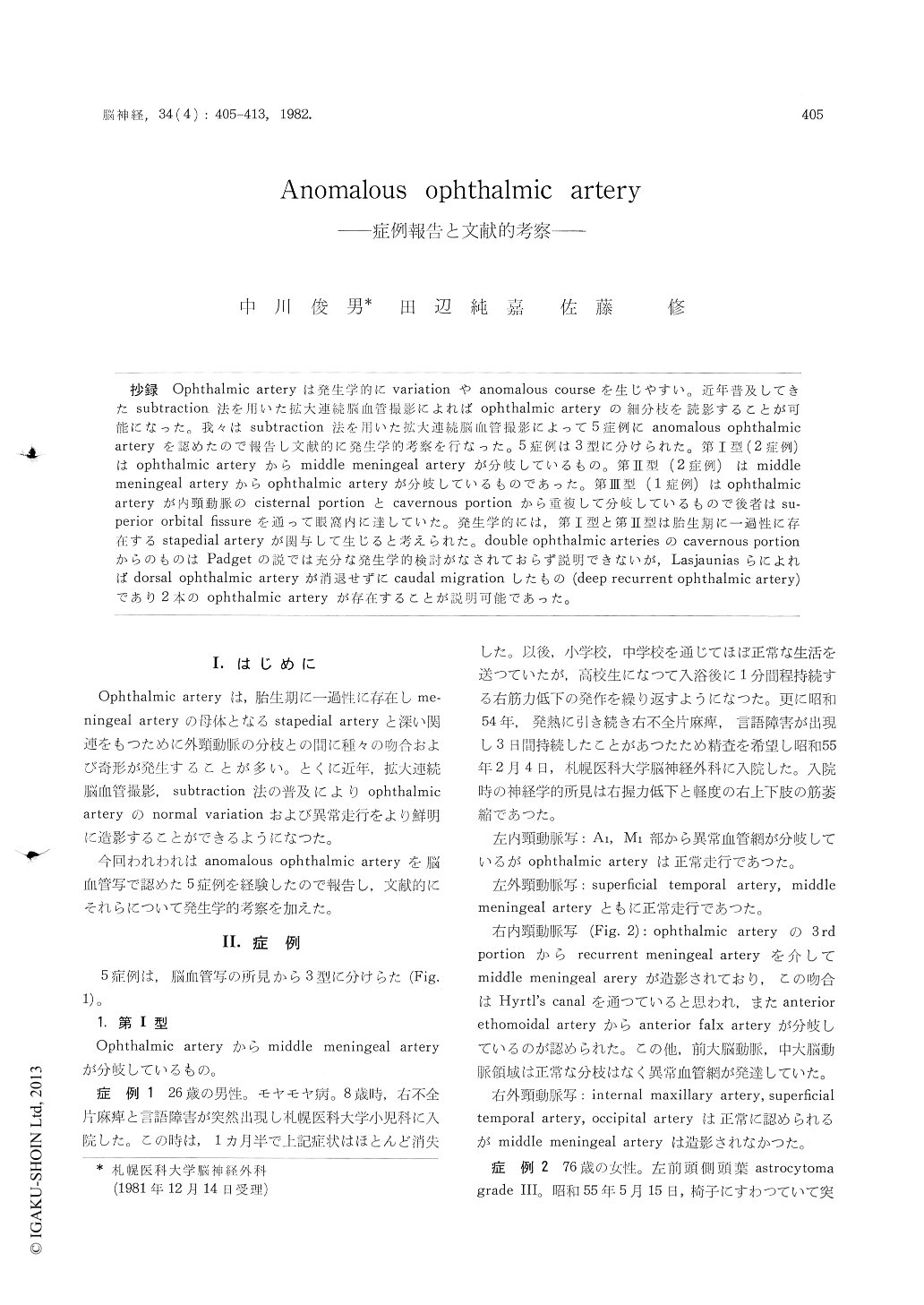Japanese
English
- 有料閲覧
- Abstract 文献概要
- 1ページ目 Look Inside
抄録 Ophthalmic arteryは発生学的にvariationやanomalous courseを生じやすい。近年普及してきたsubtractior1法を用いた拡大連続脳血管撮影によればophthalmic arteryの細分枝を読影することが可能になった。我々はsubtraction法を用いた拡大連続脳血管撮影によって5症例にanomalousophthalmicarteryを認めたので報告し文献的に発生学的考察を行なった。5症例は3型に分けられた。第Ⅰ型(2症例)はophthalmic arteryからmiddle meningeal arteryが分岐しているもの。第Ⅱ型(2症例)はmiddlemeningeal arteryからophthalmic arteryが分岐しているものであった。第Ⅲ型(1症例)はophthalmicarteryが内頸動脈のcisternal portionとcavernous portionから重複して分岐しているもので後者はsu—perior orbital fissureを通って眼窩内に達していた。発生学的には,第Ⅰ型と第Ⅱ型は胎生期に一過性に存在するstapedial arteryが関与して生じると考えられた。double ophthalmic arteriesのcavernous portionからのものはPadgetの説では充分な発生学的検討がなされておらず説明できないが,Lasjauniasらによればdorsal ophthalmic arteryが消退せずにcaudal migrationしたもの(deep recurrent ophthalmic artery)であり2本のophthalmicarteryが存在することが説明可能であった。
Case reports and review of literature were per-formed concerning anomalous or normal variant ophthalmic arteries discovered by angiography. In five cases, we recognized three types of the varia-tion of the ophthalmic artery on serial magnifica-tion carotid angiograms.
In the first type (case 1, 2), the middle meningeal artery originated from the ophthalmic artery. Inthe second type (case 3, 4) the ophthalmic artery originated from the middle meningeal artery. In the third type (case 5), double ophthalmic arteries originated from the cisternal portion and the cav-ernous portion of the internal carotid artery (ICA). The ophthalmic artery originating from the cav-ernous portion of the ICA entered the orbit through the superior orbital fissure and had a small branch to the foramen rotundum.
In the first and second type, the stapedial artery was considered to play an important role in the formation of anomalous ophthalmic arteries. In regard to the third type, Lasjaunias called the ophthalmic artery from the cavernous portion ofthe ICA as the deep recurrent ophthalmic artery or the inferolateral trunk of the ICA. It's artery was the dorsal ophthalmic artery in a fetal period which had migrated caudally from the cisternal portion of the ICA to the cavernous portion. But Padget gave another explanation. She described that the inferolateral trunk of the ICA called by Lasjaunias was the primitive maxillary artery and the dorsal ophthalmic artery did not migrated to the cavernous portion. The origin of the ophthal-mic artery originating from the cavernous portion of the ICA in the third type should be further analysed embryologically.

Copyright © 1982, Igaku-Shoin Ltd. All rights reserved.


